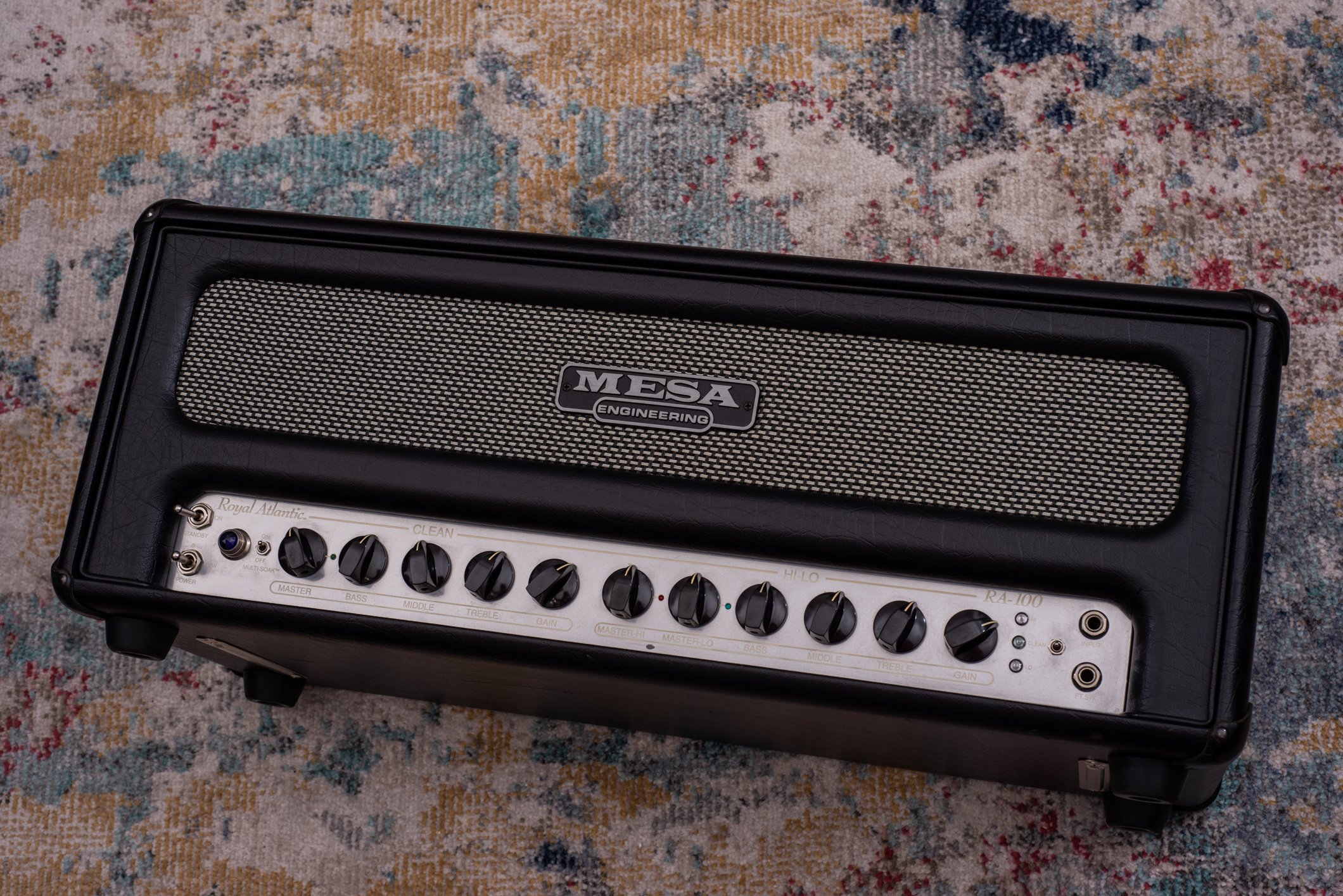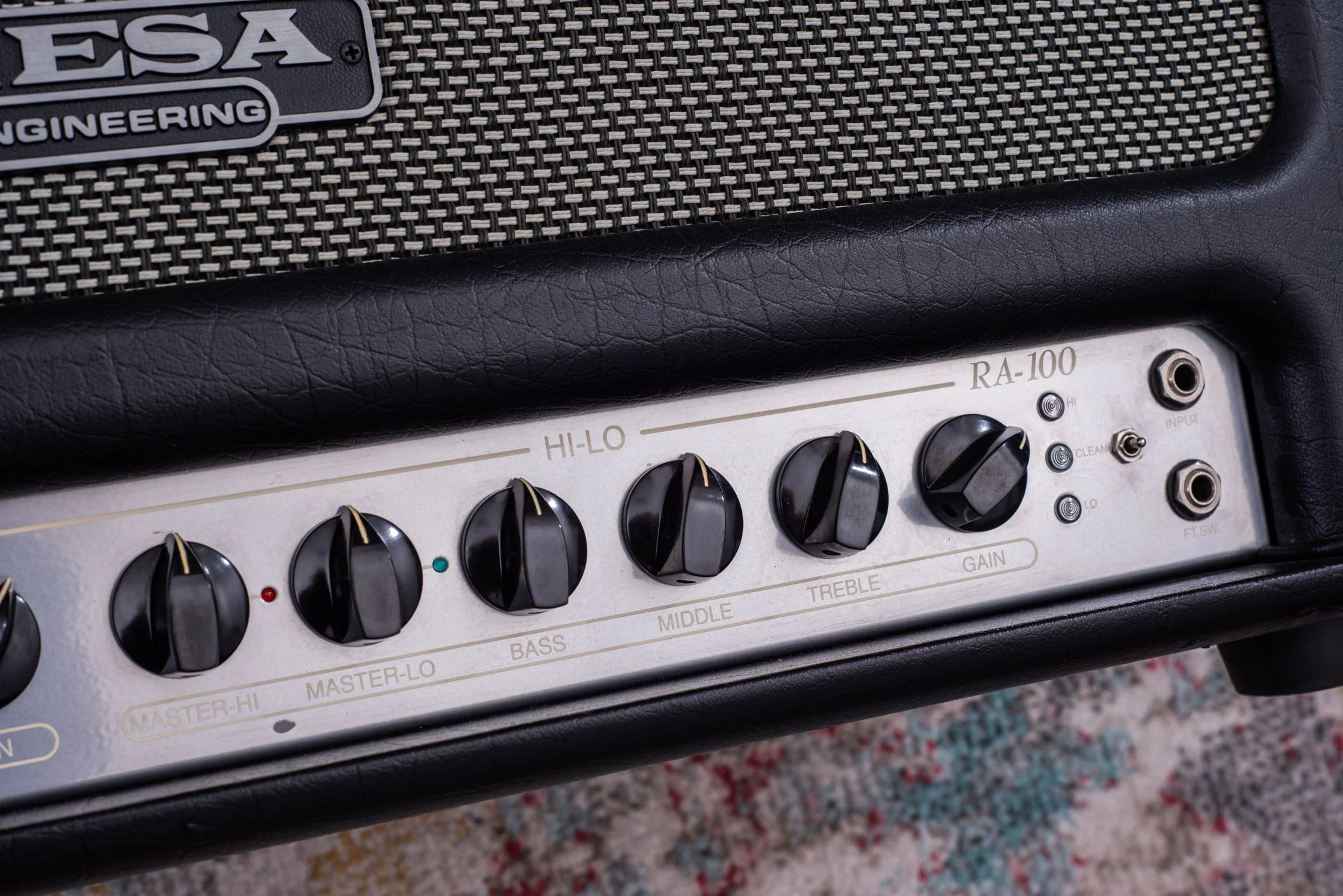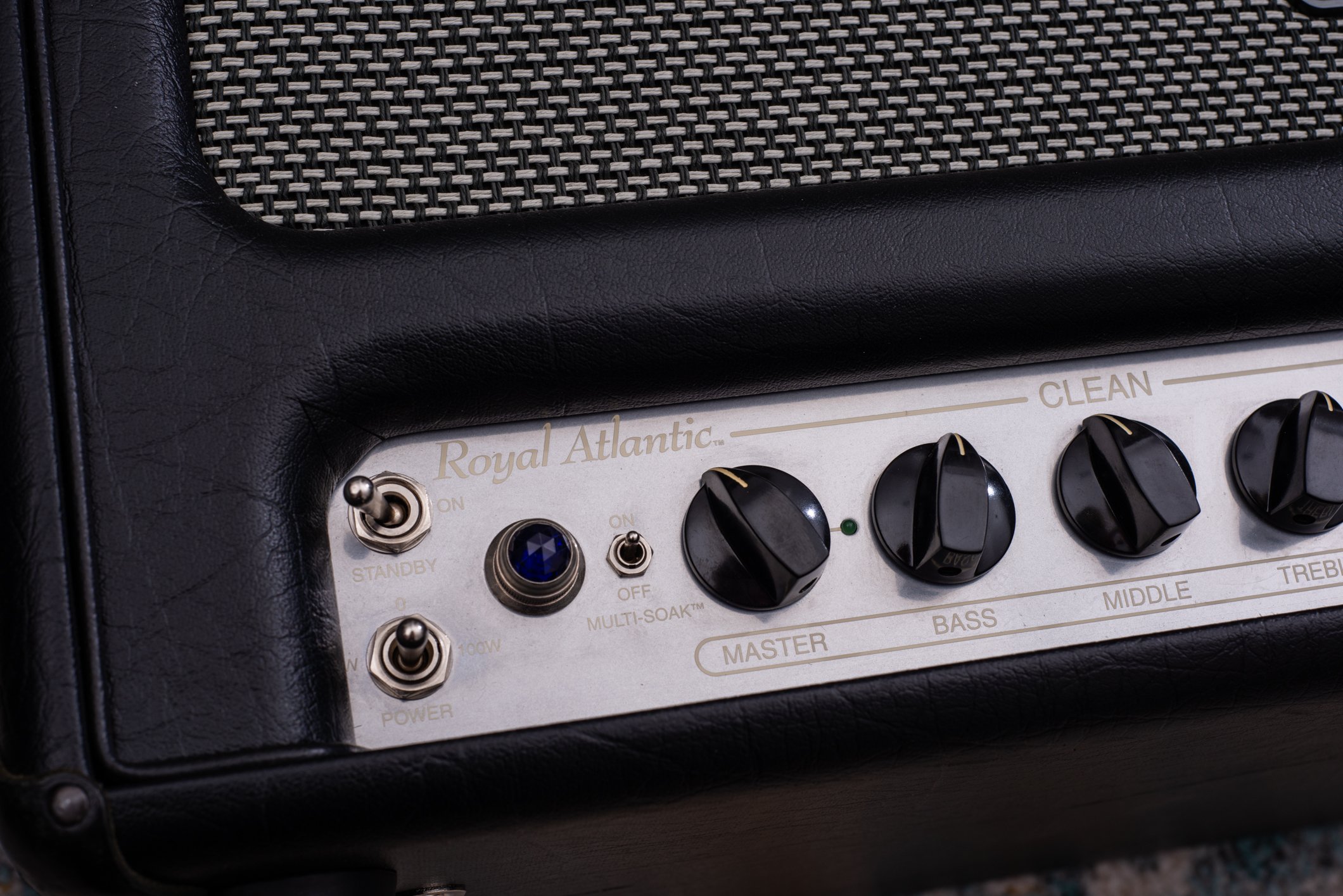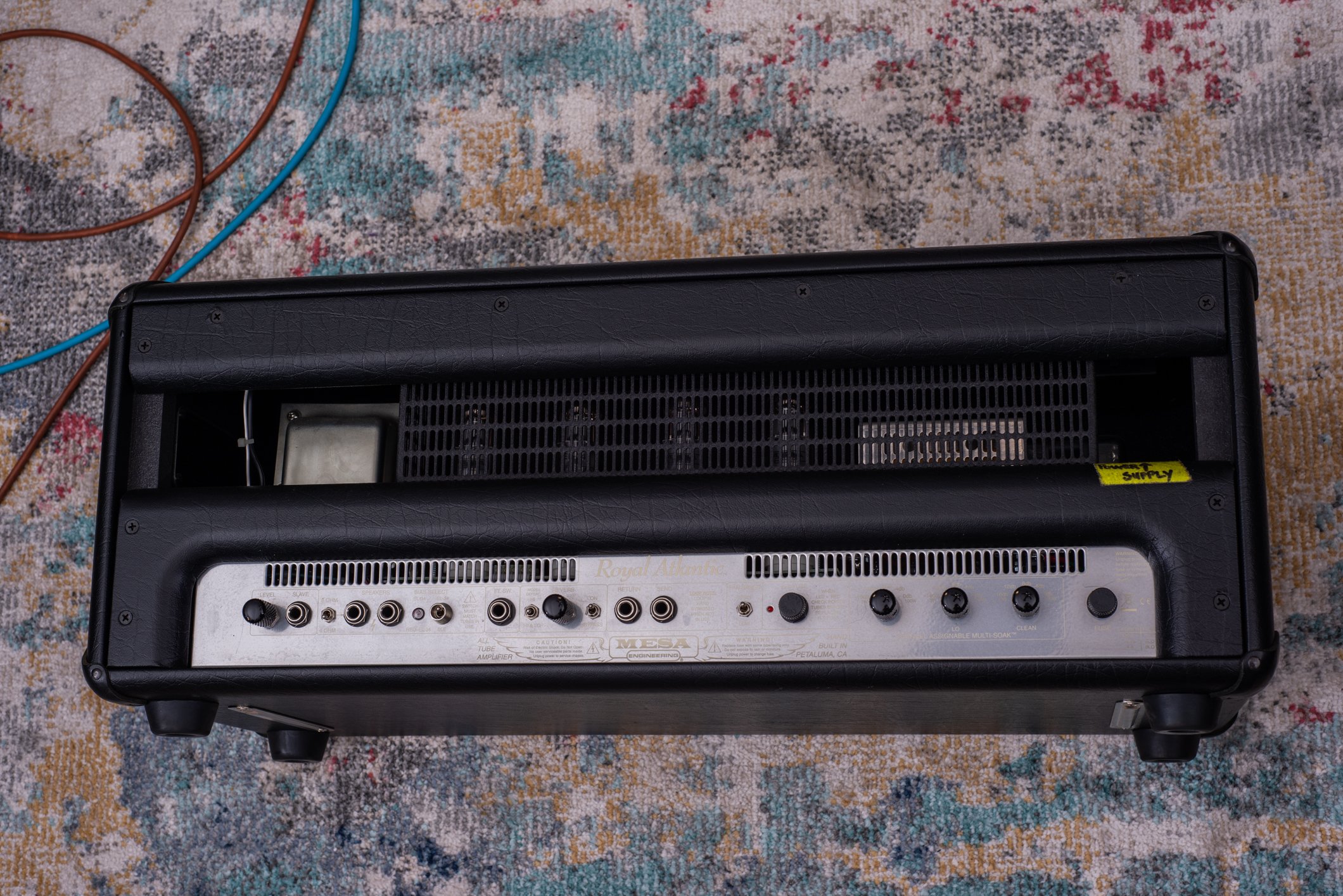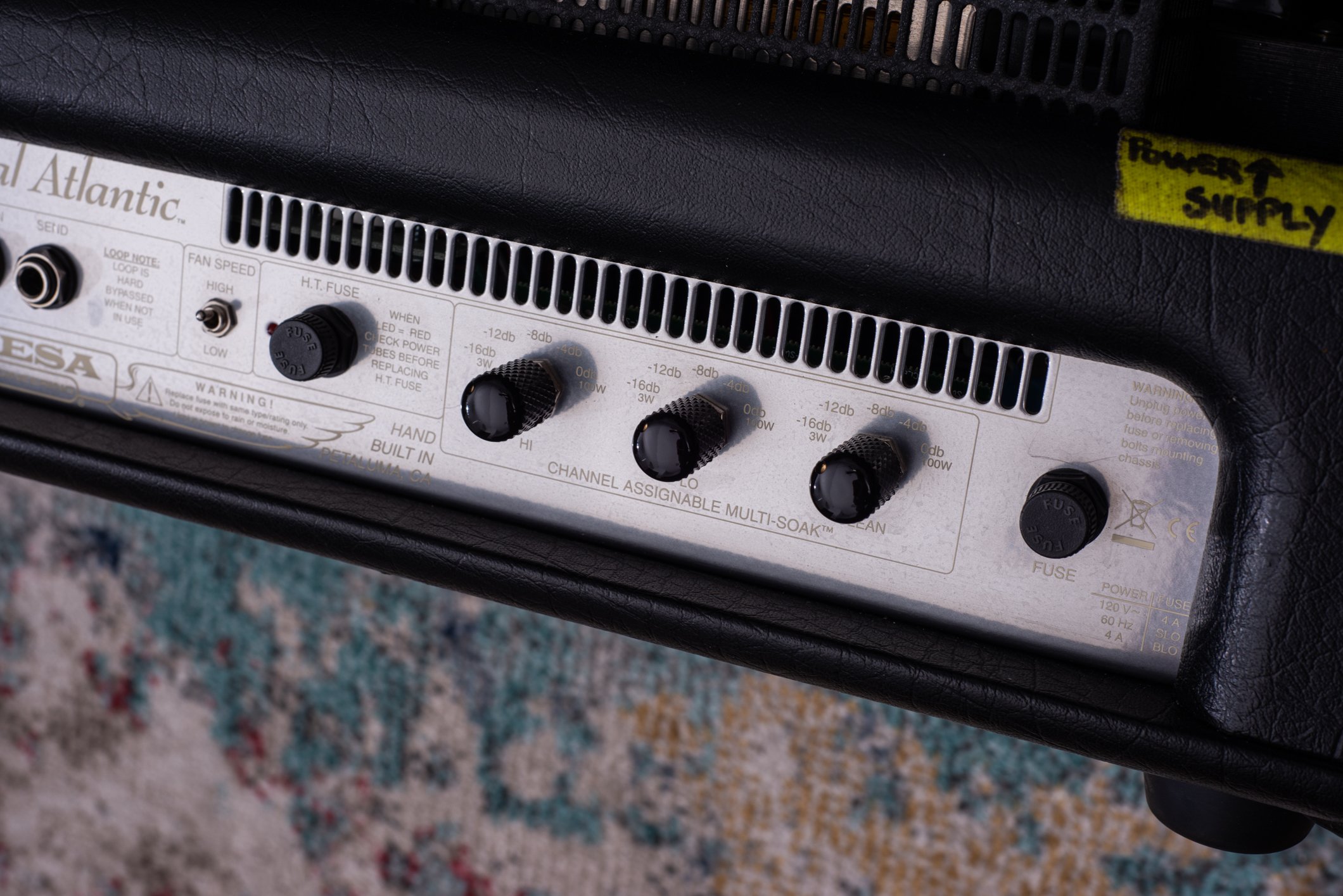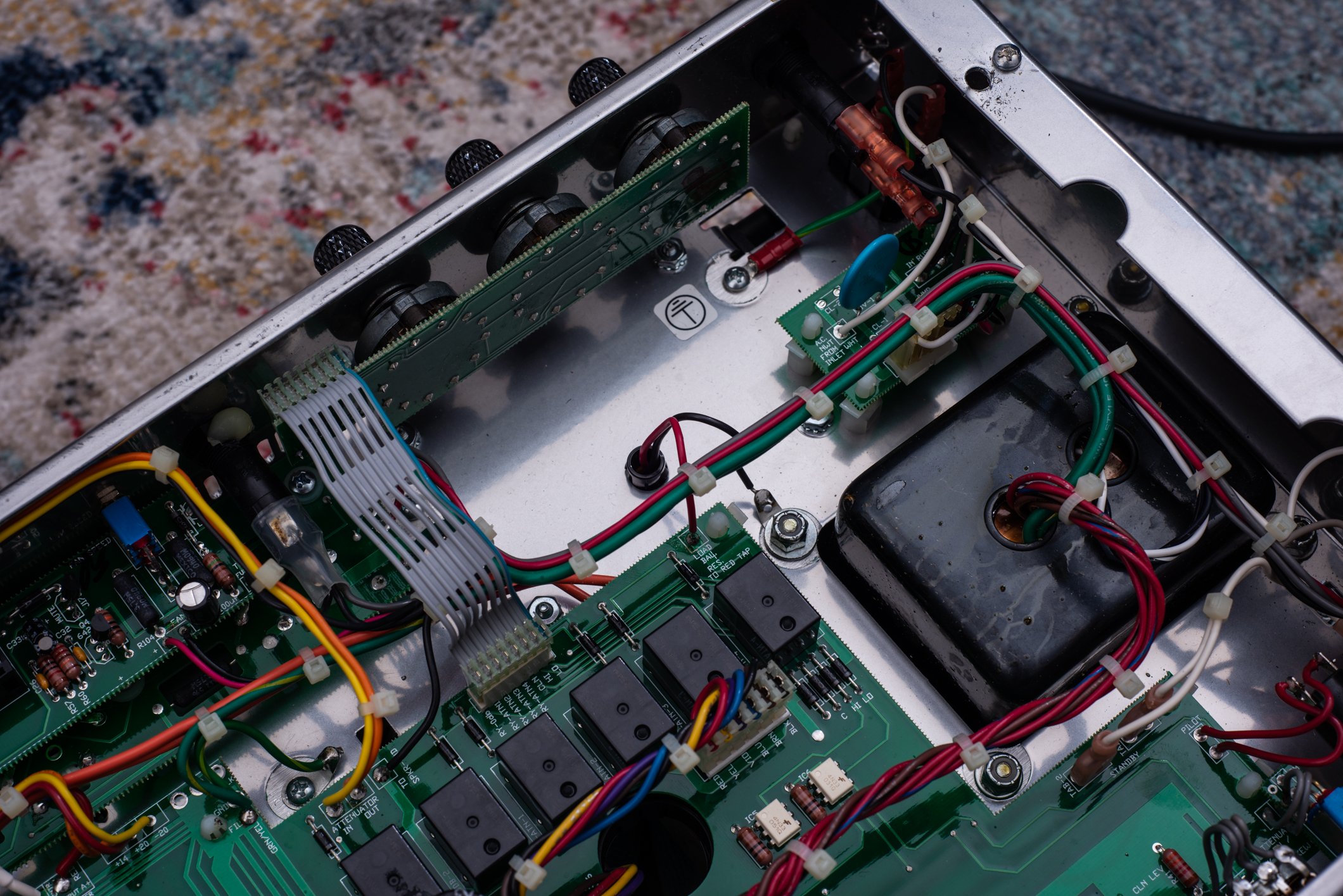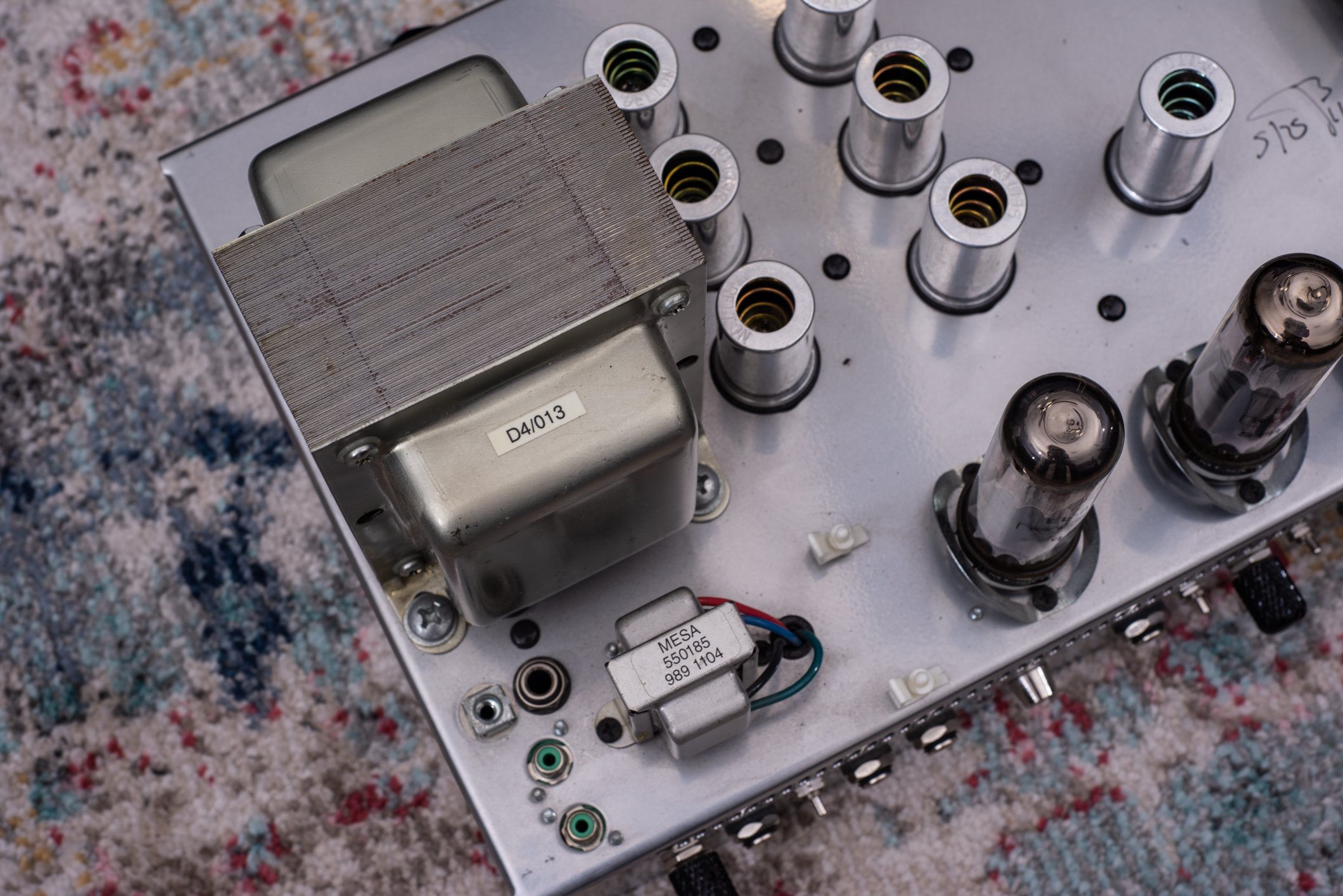2011 Mesa Royal Atlantic RA100
Specs
2 Channels
Drive channel has HI and LO modes
100w Output
4x EL34 Power Tubes
7x 12AX7 Preamp tubes
Built-in “Powersoak” Speaker Attenuator
Spring Reverb
Overview
I had the chance to play one of these over a decade ago at a local music shop near my college. At the time, it was way out of my price range and I really just wanted a Dual Rectifier anyway, so I didn’t spend a lot of time on it (or the nearby TA30). Skip ahead a decade and suddenly I’m wondering if I didn’t really give it a fair chance, and especially after playing the Triple Crown TC50 and Stiletto Trident (two other Mesa amps marketed for their “British” tones) I really wanted to compare this with a more refined ear.
Coming from the TC50, this amp leans much further into vintage territory, both in terms of the gain structure, voicing, and especially the features. I’ll try not to talk about the TC50 too much, but it’s such a useful comparison because in many ways, this RA100 clearly inspired that amp, so it’s interesting to see what changes they made and how they tackled certain features to make them a little more versatile (the TC50 covers a lot more ground than this amp does). So besides the obvious voicing differences, one of the most telling features to me is the RA100’s built-in Power Soak feature. This is a true speaker attenuator, placed after the power amp but before the speakers, in the same way an external attenuator would be set up (like a THD Hotplate etc). It is a little basic - it was designed before 2011 after all - but each channel has its own 5-way rotary control that allows steps of volume reduction, from “off” to -16db (around 3w output, according to the back panel). Furthermore, the amp can be run in 50w mode, which is just a drop to only two power tubes (not a pentode/triode switch as some amps have), so theoretically it could go even less than 3w, while running the power tubes at much higher output. Of course, this does mean the tubes will be running hotter, and the attenuator itself will also get hot. There is an externally mounted, very large, soak resistor right up against a small fan, which can be switched to blow at high or low speed. I’d highly recommend running this fan at high basically all the time, it isn’t that loud and heat is certainly a tube killer. So… how badly does this attenuation affect the tone? Not much in practice, the tone gets a bit chunkier and more willing to slide into harmonic feedback, and notes hang on forever, even on the clean channel. I’m very impressed, it’s just a killer tool, and since it can be set per channel, you can leave it off for a brighter high gain rhythm sound, then switch to the clean channel at -16db for an ultra lush clean with a hint of power tube breakup - incredible and a feature unlike any other amp I own. However, unlike many external attenuators or more modern designs, the Power Soak exists only between the poweramp and speaker - there are no Cab IR’s, line outs, headphone jacks, etc - it’s very basic and it doesn’t need to be more complicated for this kind of amp (note: the amp still has a slave out like most Mesas, but it is not affected by the Soak). In contrast, the Triple Crowns have a similar feature, but it’s a built-in CabClone, which does nothing between the power amp and speakers - no extra power tube breakup on those amps without some other device. Instead, you get a few speaker options for emulated line out and a headphone jack - which is great, killer for practice or recording - but I think that describes the design philosophy differences between these two amps in a nut shell. The TC is more convenient, more modern, but the RA100 has that vintage tone and the ability to achieve true power tube breakup right through your speakers, ready to be used at your favorite bar or club.
Another feature is the long spring reverb, tube buffered as well. The RA100 has a single master reverb mix located on the rear panel, and a few switching options - take the reverb completely out of the circuit, or you can bypass it only on the HI channel, or both drive channels if you desire. I do hear a bit of “tone suck” with the reverb engaged, even with the knob turned all the way off, so this switching is very convenient for making sure you don’t get that if you don’t need any, and the Reverb is not footswitchable. I currently prefer it on the clean and LO channels, and off for HI, but occasionally I like it even on the HI channel for swimming, gainy lead tones on my neck humbucker. To compare to the TC50 again, the TC lets each of the 3 channels have their own reverb mix control, and has the same problem with “tone suck” when engaged - but that amp can bypass the reverb on any channel via footswitch.
It’s hard to deny how awesome the amp sounds. It features an interesting dual-gang gain pot on both the HI/LO channels, a feature that is similar to the TC again (which also features a dual-gang gain pot), but I don’t have the schematics available for either of these amps to compare what else is similar. LO and HI both have very similar tones, but as expected, substantially more gain is available on the HI channel, and they do share a 3-band EQ. It is worth noting that this amp has no presence or depth controls, so the power amp is fixed - I didn’t notice any difficulty in dialing in more cut or punch with the available controls though. The drive tones do have a bit of that British flair, but it’s certainly not a Marshall clone of any kind - it has its own distinct kind of tone going on. It doesn’t sound like any other Mesa either… it’s no Stiletto or Triple Crown competitor really. I feel lucky to finally have one in the collection, considering they only made roughly 1000 units - it was not a particularly popular amp despite the almost universally glowing reviews. I think it comes a bit from the marketing material - it’s yet another amp in a sea of amps with some variation of the “anywhere from clean to high gain with British flavor, this amp does it all” strategy and I don’t think that really makes the amp stand out as much as it should. Oh, and while it may seem like an afterthought to mention the clean channel now, it certainly was no afterthought to the designers. The clean channel is terrific, with an extremely wide frequency range and very bell-like. Couple that clean channel with the Power Soak and there’s truly some magic in this box, and one of the most fun moments I’ve had in recent memory was setting the Soak to -16db and alternating between higher gain or higher volume settings on the clean channel. The elastic feel of the strings and the way the notes hold on with tons of natural compression made me feel like a much better guitar player than I am, anywhere from slightly gritty neck pickup jazz leads or back to spankier crystal-clean tones in the same vein as “Sultans of Swing” are available here. Just excellent.
